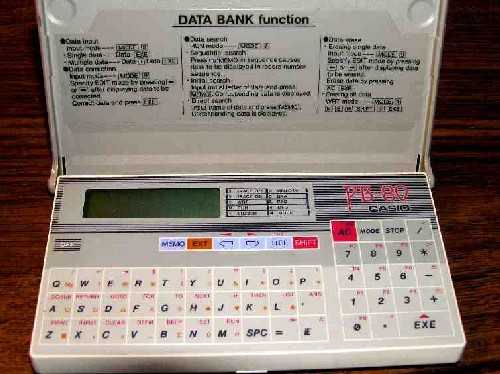




|
NAME |
PB-80 |
|
MANUFACTURER |
Casio |
|
TYPE |
|
|
ORIGIN |
Japan |
|
YEAR |
1979 |
|
END OF PRODUCTION |
Unknown |
|
BUILT IN LANGUAGE |
Basic interpreter |
|
KEYBOARD |
53 keys with numeric keypad |
|
CPU |
HD61913 CMOS VLSI |
|
SPEED |
455 kHz ceramic resonator used as system clock |
|
RAM |
1 KB (544 bytes for Basic programs) up to 2 KB |
|
ROM |
12 KB |
|
TEXT MODES |
1 line x 12 chars plus a 4 digit seven segment display part |
|
GRAPHIC MODES |
None |
|
COLORS |
Monochrome LCD |
|
SOUND |
None |
|
SIZE / WEIGHT |
137 (W) x 76 (D) x 12 (H) mm / 92 g (with batteries) |
|
I/O PORTS |
12-pin expansion port for printer and
cassette interface |
|
POWER SUPPLY |
2 x CR-2032 lithium batteries |
|
PERIPHERALS |
OR-1 1 KB RAM PACK |
|
PRICE |
63 e(France, Dec. 1984) |
|
Casio PB-80
|
|
Casio PB-80/100 |
|
debugging a painstaking endeavor.
|
